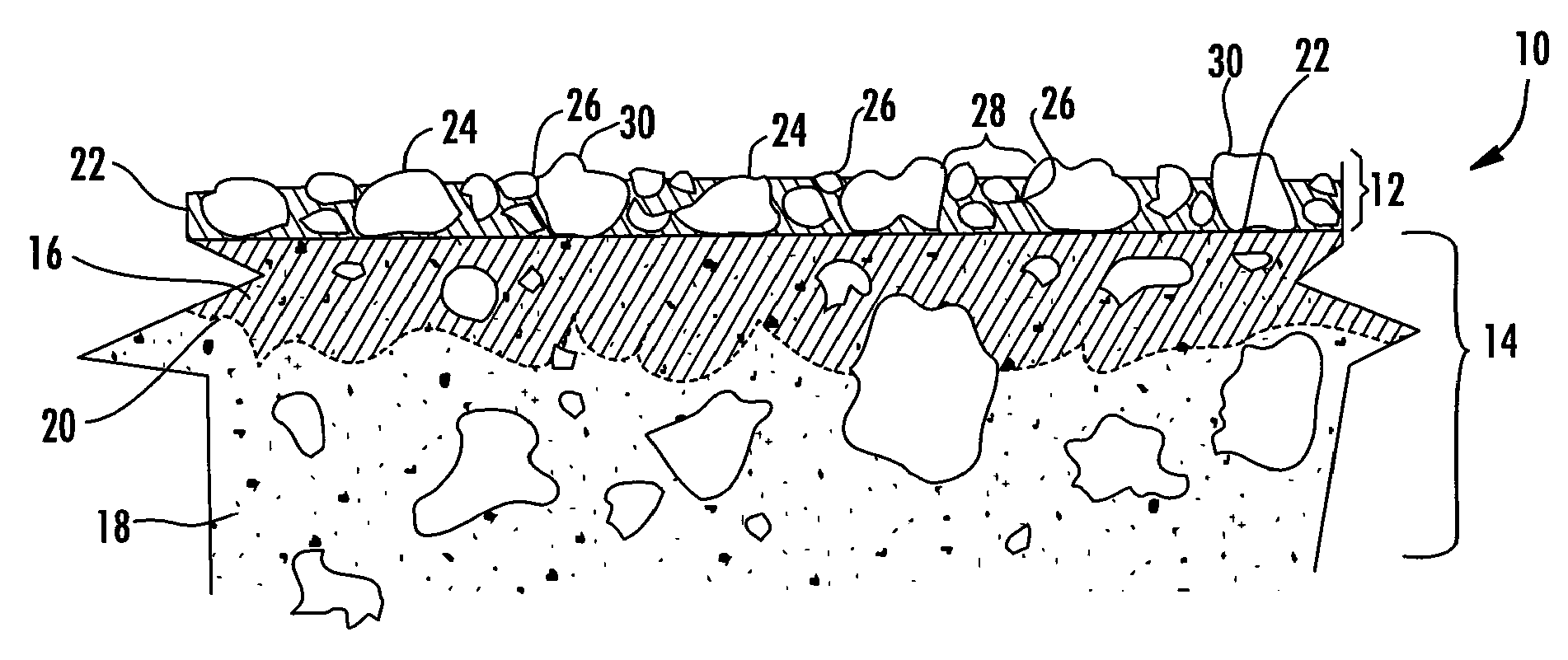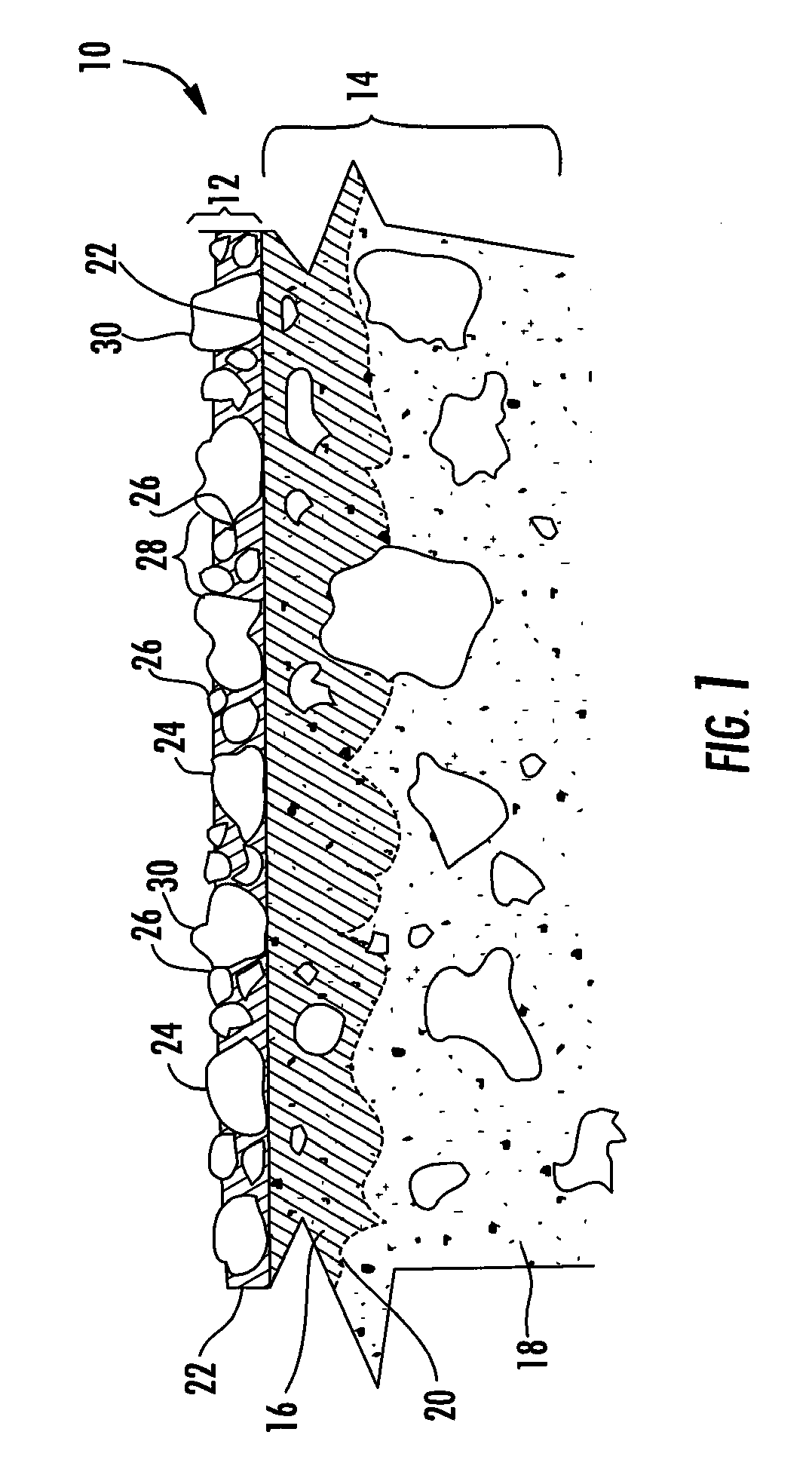Composition and process of using an asphalt emulsion to convert an unpaved surface into a paved surface
- Summary
- Abstract
- Description
- Claims
- Application Information
AI Technical Summary
Benefits of technology
Problems solved by technology
Method used
Image
Examples
example 1
Adherence of the Paved Surface to a Felt Base Material
[0060]Test method ASTM D7000-4 was used to test the adherence of the paved surface to an underlying base material. A stainless steel strike-off template of 280 mm in diameter was cut out and placed on an asphalt felt disc of 30 cm×36 cm (30 lb. asphalt felt paper, ASTM D226). 80 g of the 65% CQS asphalt emulsion was spread evenly within the opening of the strike-off plate. 250 g of unwashed coarse aggregate (100% passing through a 9.5 mm sieve and <1% passing through a #4 sieve) were immediately spread evenly on the wet asphalt emulsion. The amount of the aggregate spread on the felt roughly approximated about ½ of the typical application rate for a convention chip seal application. 250 g of finely graded Delta Type II aggregate (having a particle size distribution ranging from 0.003 to 0.25 inches) was mixed with 5 g of lime, and then applied to cover voids on the felt among chip seal aggregate. After removing the strike-off pla...
example 2
[0061]From the above test, the amount of the amount of Delta aggregate was reduced to 150 g and 3 g Portland cement was used instead of the lime. 70 g of the CQS asphalt emulsion was applied to the felt. The first aggregate was kept at the same amount as in the previous test (250 g). No bleeding of the asphalt emulsion was observed when the finely-graded Delta aggregate was spread. The sample was cured for 1 hour at 35° C. in the forced air oven as in Example 1.
example 3
Adherence to Compacted Carolina Red Clay Soil
[0062]Well-moistened Carolina red clay was compacted on a felt to form a 2 cm thick clay base layer. 80 g of the 65% CQS asphalt emulsion was then spread evenly on the still moist clay base with a spatula. 250 g of the unwashed coarse aggregate and 150 g of the finely graded Delta aggregate from Example 1 were mixed with 3 g Portland cement and applied as in Example 2. The combined aggregate layer was then compacted by rolling a 1 gallon paint can, and the felt was placed in an oven as discussed in Example 1 for 1 hour. The aggregate layer was well adhered to the compacted clay base layer. Penetration of the asphalt emulsion into the clay base was negligible.
PUM
| Property | Measurement | Unit |
|---|---|---|
| Length | aaaaa | aaaaa |
| Length | aaaaa | aaaaa |
| Fraction | aaaaa | aaaaa |
Abstract
Description
Claims
Application Information
 Login to View More
Login to View More - R&D
- Intellectual Property
- Life Sciences
- Materials
- Tech Scout
- Unparalleled Data Quality
- Higher Quality Content
- 60% Fewer Hallucinations
Browse by: Latest US Patents, China's latest patents, Technical Efficacy Thesaurus, Application Domain, Technology Topic, Popular Technical Reports.
© 2025 PatSnap. All rights reserved.Legal|Privacy policy|Modern Slavery Act Transparency Statement|Sitemap|About US| Contact US: help@patsnap.com


